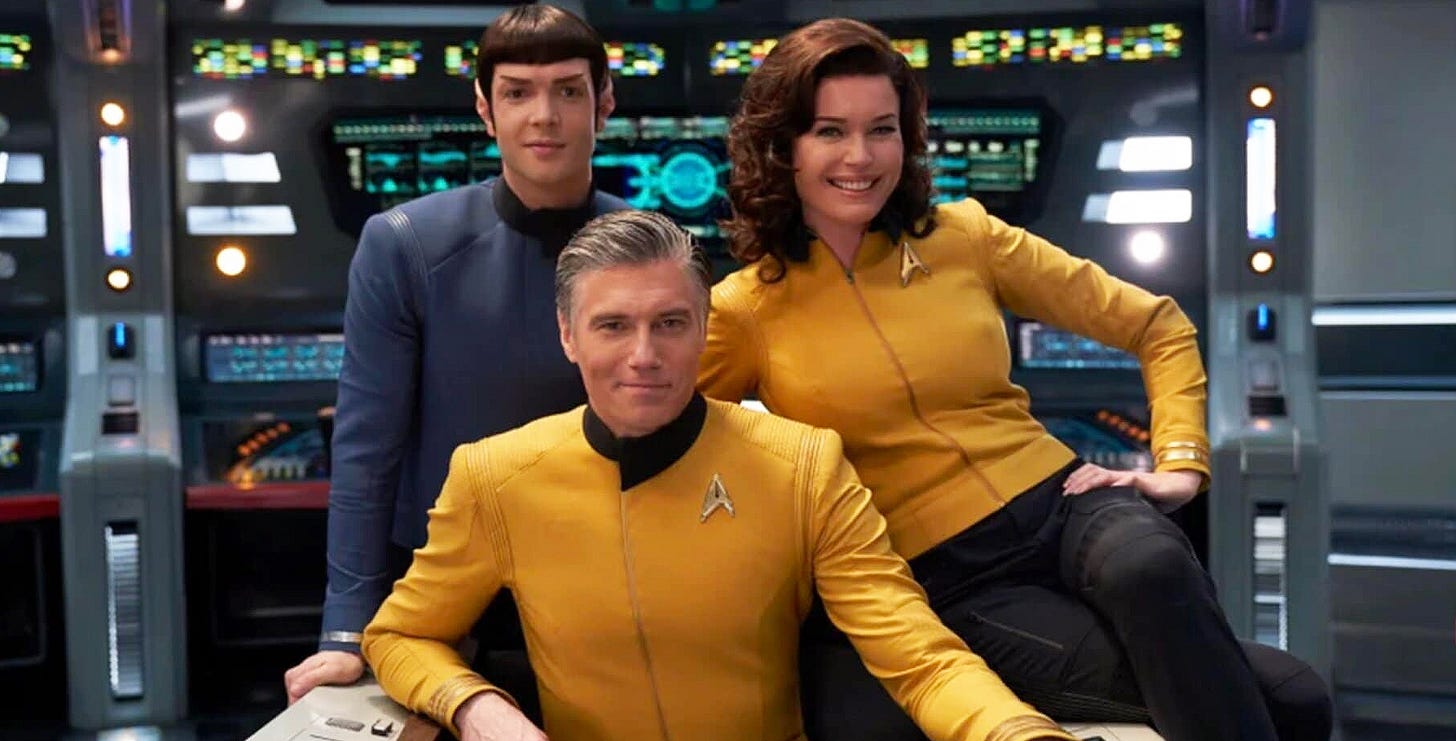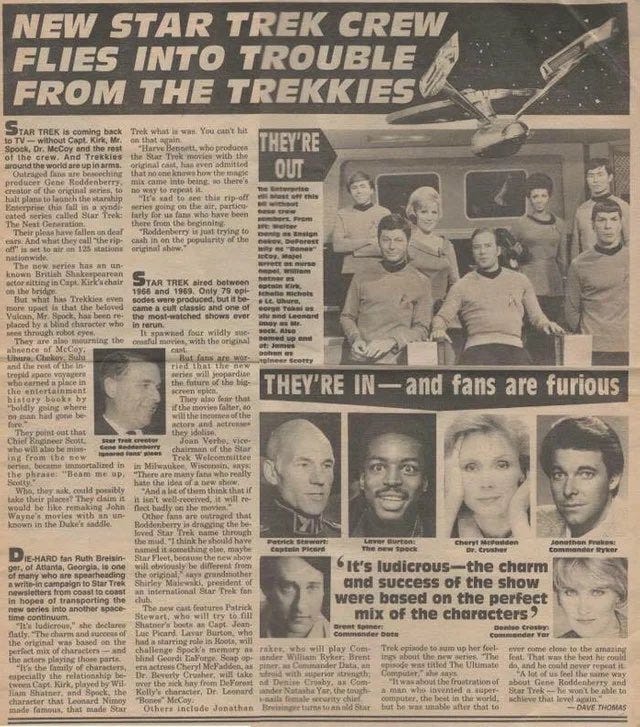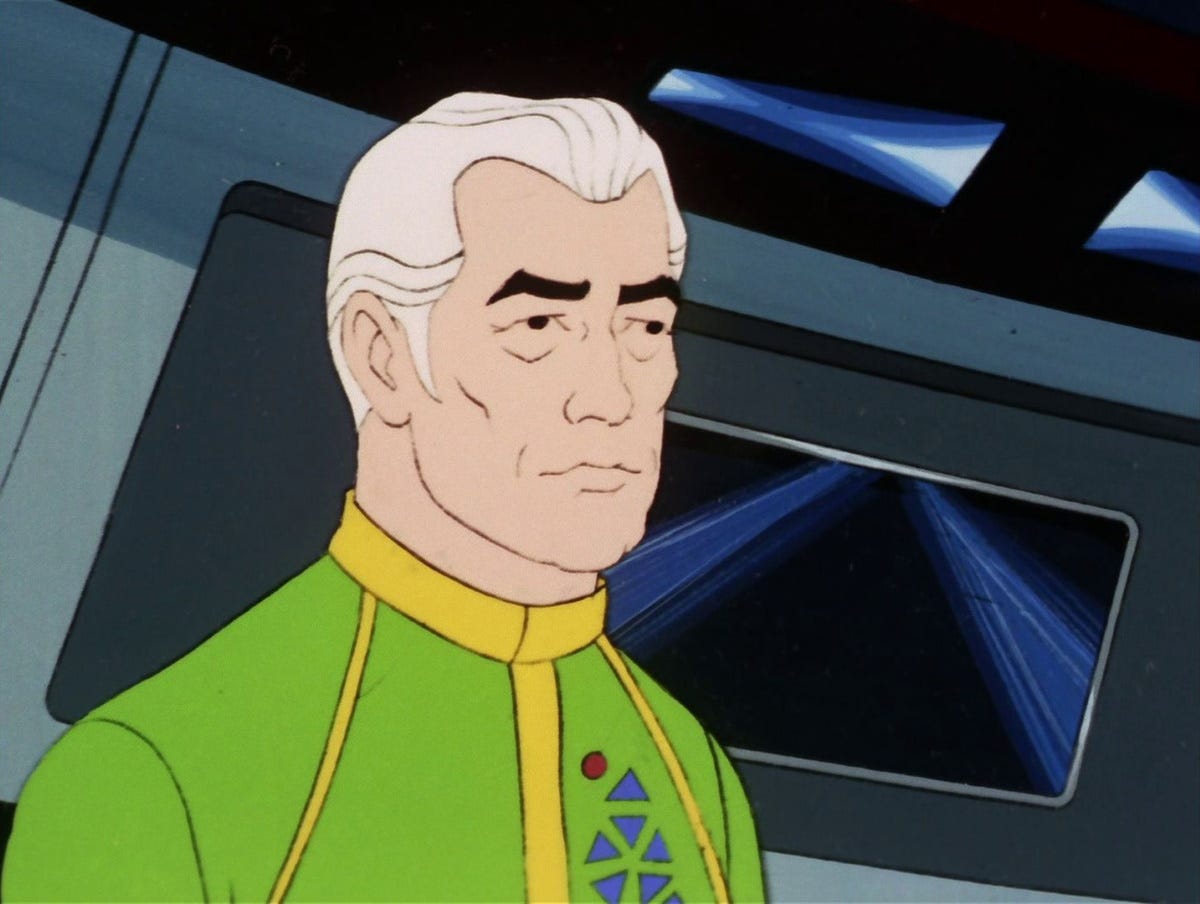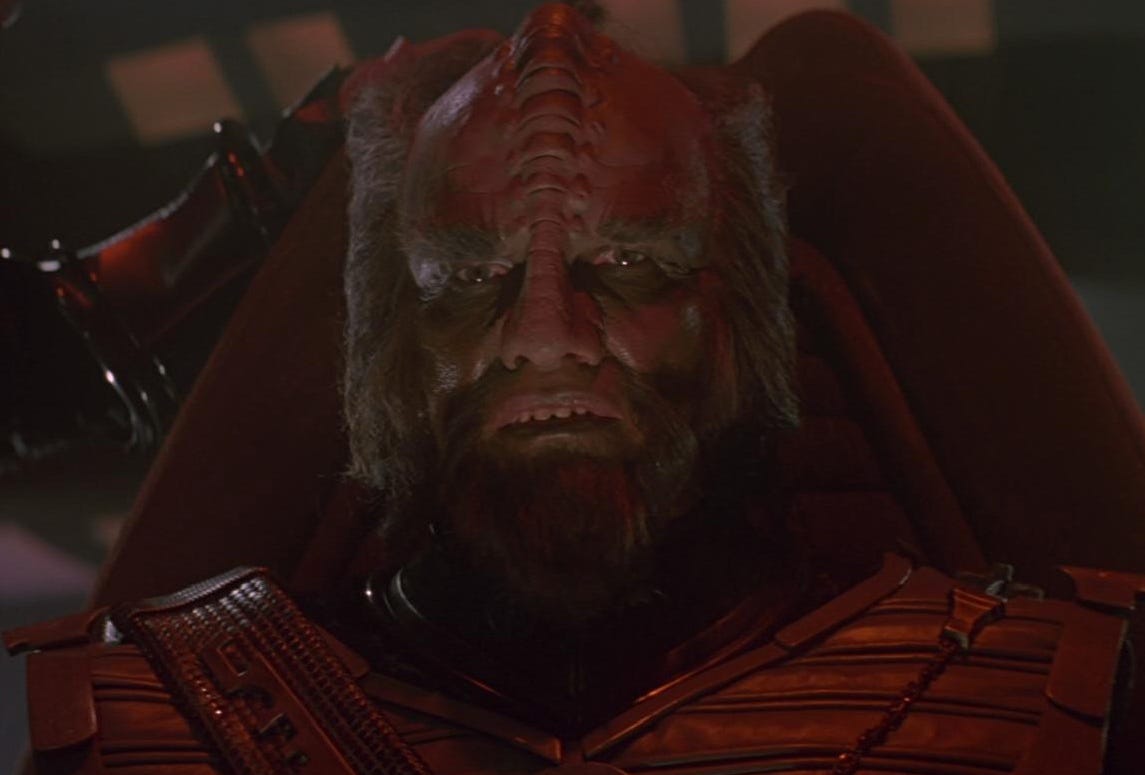The Heaven And Hell of Star Trek Canon
Like religion's scriptures, Trek canon can be both a tool and a weapon
Editor's Note: We’re back with another special edition of Subspace Chatter. We only just published our previous edition Sunday — and publication has not been intended to be quite so prolific. However, there's a lot going on in the franchise, so we wanted to get this out ahead of Thursday's debut of the new series, Star Trek: Strange New Worlds.
The mind is its own place, and in itself can make a heaven of hell, a hell of heaven..
— John Milton, Paradise Lost
Since before I was a Buddhist, I have believed in Star Trek.
And, in a sense I suppose, like Buddhism you could consider Star Trek to be something like a non-theistic religion. (Actually, I've found Star Trek and Buddhism to be extremely complementary.)
It certainly functioned like that for me, that when I was young. I watched a lot of Star Trek — back then, it was the original series in an almost-endless loop of reruns after school.
It was from Star Trek, at that young age, that I learned — absorbed might be an even better description — the set of values and ethics which has guided me for the rest of my life.
This would include an abiding acceptance and appreciation for diversity, a revulsion towards things like racism and xenophobia. It also would guide me to embrace the notions that there's much more to a person’s value than their bank account, that society can — and should — protect people from want and poverty, and that we each can actively work to better ourselves and society without a paycheck being attached.
Star Trek's creator, Gene Roddenberry, was a well-known proponent of what at least used to be called secular humanism. So Star Trek could be fairly called a manifestation of that philosophy or non-theistic religion.
And the individual episodes and stories formed a scripture, in a sense. From its very beginning, Star Trek has at its best told allegories about particular ideals and values, or asked important questions about the human condition.
So the episodes, or canon, came to serve as a sort of scripture.
Canon helps create a unified whole from the individual parts which make up Star Trek. And, to that extent, canon can serve a useful purpose.
But, as with any religion or philosophy based on given scripture or canon, it would become open to interpretation and — ultimately — debate.
So it would be that in the decades since original Star Trek has been on the air, canon has been a source of argument and dissension.
Since the world and universe of Star Trek was so idealistic and appealing, it could be easy for fans to become consumed by the details — even the minutiae — of any and every episode.
When used constructively, canon and continuity can help create an even more cohesive and engaging source for imagination.
But when used negatively, it can become obsessive and stifling to imagination.
Yet heated debates — even outright schisms — have emerged in the Star Trek fandom.
Fans have complained — sometimes angrily — over developments and changes which they felt have not always been consistent with the way Star Trek always has been.

And on the eve of something that we all should be celebrating — the premiere of a new Star Trek series based on concepts fans have asked for, a return to more-episodic and adventure-based storytelling — we're in the midst of one of the worst, and really silly, arguments over canon that there has been.
The premiere of Strange New Worlds Thursday — set as it is in the era right before the original series — has provided fodder for multiple flares of angry debate over canon.
One of the loudest — and I might say, more egregious — fights has been over the casting of Black actor Adrian Holmes as the first captain of the Enterprise, Robert April.
The controversy has erupted because April was portrayed, just once in Star Trek canon, as a white man in the animated series episode, “The Counter-Clock Incident,” in 1974.
Which, aside from at least appearing racist — which is something Star Trek ought not to be — the argument over Holmes is even more ridiculous when you consider that Roddenberry, himself, declared the animated series as a whole not to be canon.
(And can one man — even Roddenberry — declare something “not canon”? Before you know it, we are talking about some next-level foolishness in trying to pick apart our favorite franchise.)
Canon's actually changed a lot
And Star Trek has regularly altered canon to suit something or other.
Fans howled a few years ago when the Klingons were reimagined for Star Trek: Discovery.
Except that the Klingons had been reimagined before.
They went from looking like this, in the original series….
… to looking like this starting in Star Trek: The Motion Picture, and subsequently.
(The evolution from the original series, to the motion picture was welcome given that the original look was based on some racist stereotypes.)
Although disagreements over canon may sometimes come from a positive place of love for what we enjoy, they usually end up being counterproductive and ugly.
Many fans of original Star Trek refused — absolutely refused — to accept The Next Generation as canon back in the ‘80s.
Furious fans didn't even want The Next Generation to be made.

Imagine if these angry fans had gotten their way. The Next Generation — which for many fans is either (or both) their first or favorite Star Trek — would have never even existed. Nor would we have gotten Deep Space Nine, or potentially anything after.
The franchise would have died a sclerotic death — and the fans would have been the killers.
Star Trek is far from the only series which has adjusted — or even ignored — past continuity or canon to tell a great story.
A no-less beloved, or consequential, television series — MASH — produced a episode in its ninth season, titled, “A War For All Seasons.”
It traces life at the 4077 between the New Year's Eves of 1950 and 1951, including characters like Col Potter, Major Charles Emerson-Winchester, and BJ Hunnicutt.
Except that none of those characters had been there for either the start of the Korean War, or even the series. An earlier episode even firmly established Potter's arrival in camp as September 19, 1952.
(Almost as big a fan of MASH, as I am of Star Trek, I have always remembered that date given that September 19 is also my birthday.)
And yet for — pardon the pun — the mash that it makes of all of the series’ early years, and original characters, “A War For All Seasons” is powerful and funny, and stands as one of the very best stories told in 10 1/2 seasons of MASH.
Original series star William Shatner became famous (infamous?) for a skit from Saturday Night Live in the mid 1980s in which he plays himself as a guest at a Star Trek convention being peppered with questions about the, shall we say, trivia of certain episodes before — in the punchline of the bit — exhorts the fans to “Get a life!”
I can't believe that I am in agreement with, let alone advocating for a point he has made, but Shatner's sketch could well be seen as a bit of satire — and showing the futility — of fans who get too wrapped up in “canon.”
Taking these debates too far — which we can all may be guilty of, from time to time (including, dare say, myself) — is neither what Star Trek is supposed to be about nor does it show us as fans in our best light.
So, when all finally get our first shot to watch Strange New Worlds Thursday, I think that we should just sit back, watch and enjoy the new series on its own merits.
Here are a few clickable nuggets to help us better enjoy Thursday's long-awaited debut on Paramount+.
Enjoy this edition of Subspace Chatter?
Please make sure you …
And also …







